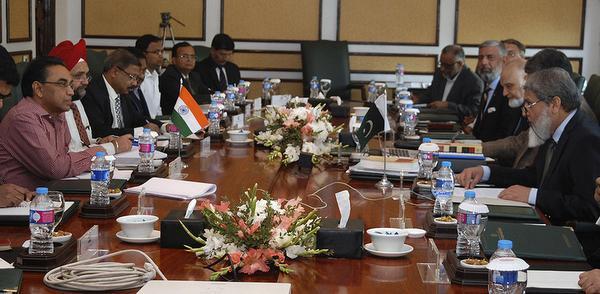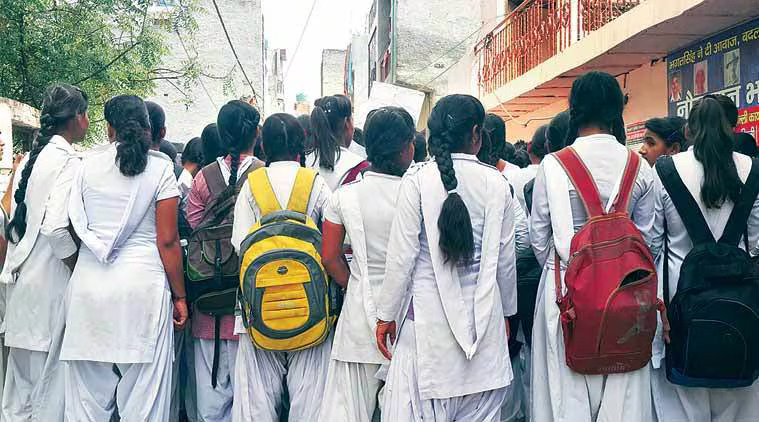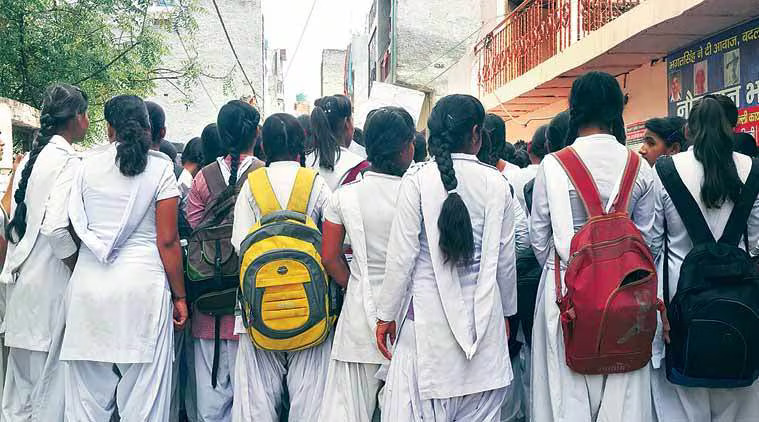India’s Indus Water Turn: From Generosity to Agri-Economic-Energy Power Play

In response to the Pahalgam attack on April 22, India announced a series of retaliatory measures—among them, the suspension of the Indus Waters Treaty (IWT). Should India proceed to restrict or control the flow of water from the western rivers—Indus, Jhelum, and Chenab—it would cause severe disruptions across Pakistan’s food systems and other critical sectors that heavily depend on the Indus Basin.
Signed on September 19, 1960, after nearly a decade of negotiations under the World Bank’s mediation, the IWT established a detailed water-sharing mechanism between India and Pakistan. Any bold action by New Delhi to suspend the treaty would not only mark a geopolitical shift but also silently deliver a profound blow to Pakistan’s already fragile economy.
Agriculture, the backbone of Pakistan’s food security, would be particularly vulnerable. Disrupting water flows could destabilize this sector, threatening broader economic stability across Pakistan.
India's Generosity Under the Indus Waters Treaty
India is often regarded as “generous” under the IWT. Despite being the upper riparian state, India agreed to a distribution that overwhelmingly favored Pakistan. While it had the theoretical right to claim a larger share, India accepted a deal where only 20% of the Indus system’s waters were allocated for its use, while Pakistan received over 80%. This concession is remarkable given that the rivers originate or flow through Indian territory.
Comparatively, Mexico’s share under its water-sharing treaty with the United States is far smaller—highlighting the unique nature of the IWT and India’s unusually accommodating stance.
The suspension of the IWT would have sweeping consequences for Pakistan’s agriculture, economy, and social fabric. As the fifth-most populous country, with over 241.5 million people, Pakistan is almost entirely reliant on the Indus River system for water, agriculture, and hydropower.
India’s action directly threatens these core lifelines—water, food, and energy—placing millions at risk.
The Indus system contributes nearly 25% to Pakistan’s GDP. Water scarcity could cripple this foundation. Pakistan is already facing a dire water crisis, with per capita availability dropping below 1,000 cubic meters annually—a critical "water stress" threshold. In comparison, India’s per capita water availability remains relatively stable, estimated at 1,486 cubic meters in 2021, with a projected decline to 1,367 cubic meters by 2031.
Any further reduction would intensify Pakistan’s vulnerability, potentially leading to famine-like conditions. On the flip side, Indian farmers—especially in drought-prone areas like Rajasthan, Punjab, Haryana, and hilly regions—could see a dramatic boost in agricultural productivity and rural livelihoods due to improved water availability.
In Pakistan, agriculture employs nearly 40% of the labor force. Farming collapse would lead to mass unemployment, triggering large-scale rural-to-urban migration and overwhelming already congested cities. The agricultural sector, which consumes 93% of Pakistan’s irrigation demand, would be decimated. Major crops—wheat, rice, sugarcane, maize, and cotton—entirely depend on Indus waters. Punjab, known as Pakistan’s breadbasket, produces 75% of the nation's wheat and 80% of its cotton. Sindh accounts for 38% of the rice output. Both regions would face catastrophic setbacks.
Where will displaced farmers go? How will Pakistan feed its people?
Pakistan’s overreliance on groundwater is another ticking time bomb. Rapid depletion, salinization, and minimal water storage capacity worsen the crisis. With only 10% of its annual water share stored in dams like Mangla and Tarbela, the country has scant buffers.
Urban centers such as Karachi, Lahore, and Multan, dependent on Indus water for drinking and municipal use, would face acute shortages, risking civil unrest.
Moreover, Pakistan’s Human Development Index (HDI)—already low at 0.540—could plunge further, deepening socio-economic instability.
The suspension would also devastate Pakistan’s hydroelectric infrastructure, heavily dependent on the Indus, Jhelum, and Chenab. Major hydropower projects like the Mangla and Tarbela dams require uninterrupted upstream flows. Disruption would affect electricity generation, irrigation cycles, and water availability, making Pakistan even more vulnerable to climate variability and economic shocks.
After Suspension of Indus Waters Treaty, What India Needs to Do
With India suspending the IWT, a new chapter in South Asia’s geopolitical and hydrological landscape has begun. While diplomatically controversial, asserting control over transboundary rivers demands a technically sound, forward-looking strategy.
Is it even technically possible to stop or redirect the natural flow of these rivers?
The answer: yes, albeit with significant challenges.
The rivers traverse deep Himalayan gorges, making construction of diversion channels or large-scale dams complex—but not impossible. China’s aggressive water infrastructure projects provide a useful roadmap. For instance, China’s Three Gorges Dam—the world’s largest, with an installed capacity of 22,500 MW—shows what is achievable with political will and investment. In contrast, India’s largest hydroelectric facility, the Tehri Dam, stands at a modest 2,400 MW.
China has also developed multiple dams across Tibet, notably on the Yarlung Tsangpo (Brahmaputra) River—managing water before it crosses into neighboring countries.
India’s own Kishanganga Hydroelectric Project in Jammu & Kashmir (330 MW) diverted water from the Kishanganga River into the Jhelum basin, illustrating a feasible strategy. However, larger-scale initiatives are needed.
Understanding the Indus basin’s topography is crucial. Originating from Tibet at around 18,000 feet, the Indus flows through Indian-administered Kashmir before entering Pakistan at roughly 260 feet. This steep elevation drop presents engineering hurdles—and opportunities.
Global examples, such as China’s Jinping-I Dam (the world’s tallest dam at 1,001 feet), show that building large, complex water projects is feasible even in extreme topographies.
Thus, India must prioritize:
· Building high-altitude dams in Jammu & Kashmir and Himachal Pradesh.
· Developing cascade systems—a series of small-to-medium reservoirs instead of massive single dams.
· Constructing high-altitude water diversion tunnels to redirect river flows domestically.
· Creating slope stabilization structures, such as check dams and terraced retention walls, to trap rainwater and snowmelt.
· Building subsurface dams and underground reservoirs to discreetly trap groundwater flow.
· Investing in run-of-the-river hydroelectric plants with smart off-channel storage to regulate water seasonally.
India's broader hydrological vision must also include the ambitious National River Linking Project (NRLP). While complex and socially sensitive, this project could offer water security for water-stressed states through intra-basin transfers.
However, river linking in hilly regions will require special environmental, engineering, and socio-political considerations to avoid ecological damage.
Beyond infrastructure, India must engage diplomatically with global stakeholders to justify its actions, citing Pakistan’s continuous proxy warfare and the principle of equitable utilization of shared resources, which is recognized under international water law.
In conclusion, India’s suspension of the Indus Waters Treaty marks a strategic inflection point. What was once a symbol of India’s generosity is now being recalibrated into an instrument of agricultural rejuvenation, economic security, and strategic assertion.
What Other Measures Can Be Taken by India After Suspending the Indus Waters Treaty?
Suspending the Indus Waters Treaty (IWT) opens up an opportunity for India to redesign its internal water management and strengthen national water security through large-scale strategic projects. Beyond dam construction and hydroelectric projects, India should accelerate one of its most ambitious plans: the National River Linking Project (NRLP).
The NRLP envisions a vast network of canals interconnecting major rivers across the country to redistribute water from surplus basins (like the Ganga and Brahmaputra) to deficit areas (like Rajasthan, southern Punjab, and parts of central and southern India). If realized, this project would not only optimize India's water use but would also create an alternative drainage system to regulate and redirect water that would otherwise flow into Pakistan through western rivers.
The first step must be fast-tracking intra-basin projects in northern India, especially the Himalayan component of the NRLP. This includes linking rivers like the Yamuna, Ghaghra, Sharda, and Kosi, thereby maximizing storage and reducing surplus flows into the Indus tributaries. Diverting these surplus waters eastwards would enhance irrigation potential in the Gangetic plains and significantly reduce the volume of water flowing to Pakistan.
Strategically constructing inter-basin canals to transfer excess monsoon water from the Ravi, Beas, and Sutlej rivers to drought-prone areas of Haryana, Rajasthan, and parts of Gujarat could provide multiple benefits. Not only would it boost agriculture and drinking water supply in India’s parched regions, but it would also minimize Pakistan’s access to monsoon surpluses that are critical to its kharif (summer) crop cycle.
Another critical step is the revival of traditional water systems. Ancient Indian techniques like johads (small check dams), baolis (stepwells), and kunds (rainwater harvesting structures) can be modernized to create decentralized water storage in villages and towns. Rejuvenating these systems will reduce dependency on river water alone and enhance India's drought resilience.
Additionally, India can increase its water use efficiency through modern irrigation techniques like micro-irrigation, drip systems, and sprinkler farming. Currently, over 60% of irrigation water in India is wasted due to inefficient flood irrigation methods. By adopting precision farming and smart irrigation, India could conserve enough water to feed an additional 50 million hectares — and simultaneously reduce the need to leave any water flowing unused toward Pakistan.
India must also modernize its canal and dam management systems. Upgrading old, leaky canals, investing in lined channels to prevent seepage, and adopting telemetry systems for real-time water monitoring can significantly enhance water conservation and distribution.
On a diplomatic front, India should actively engage in regional water diplomacy with Nepal and Bhutan. These countries have abundant freshwater reserves originating from Himalayan glaciers. Strategic cooperation could allow India to create a broader regional water security architecture, further reducing any bargaining leverage Pakistan might attempt to exert over shared river waters.
From a legal perspective, India must prepare for the inevitable international challenges that will arise following the suspension of the IWT. Engaging in proactive international lawfare — citing Pakistan's continuous violation of bilateral agreements, sponsorship of cross-border terrorism, and failure to maintain cooperative riparian conduct — would help India present a strong case globally. Precedents like China's unilateral control over rivers originating from Tibet can serve as strategic examples.
In parallel, India should enhance its domestic water laws and interstate water dispute mechanisms to prevent internal conflicts over newly diverted water resources. Institutional frameworks like a strengthened National Water Commission with statutory powers can coordinate central and state efforts in water resource management.
Ultimately, India's post-IWT strategy must be a multi-layered hydrological, infrastructural, technological, and diplomatic offensive. By using this window to invest heavily in domestic water security and regional collaborations, India can not only safeguard its own future but also alter the South Asian strategic balance in its favor for decades to come.
The suspension of the Indus Waters Treaty marks not just a turning point in India-Pakistan relations but a decisive moment for India’s future water security strategy. By reasserting its sovereign rights over its rivers, India can turn a historical constraint into an opportunity for national rejuvenation. Strategic river interlinking, modernization of irrigation and water management, revival of traditional systems, and bold regional diplomacy can together transform India from a reactive power to a water-secure, hydro-strategic leader in South Asia. In the long arc of history, nations that master their water resources master their destiny. By breaking free from the shackles of an outdated treaty and investing in a resilient hydrological future, India can ensure that its rivers — the lifelines of its civilization — will flow forever in service of its own people, its own prosperity, and its own national pride.
Pakistan Faces Imminent Desertification Threat
Top agricultural scientists and water resource experts in Pakistan have recently raised serious concerns regarding the potential ecological disaster the country could face if India maximizes its rights under the Indus Waters Treaty. According to these experts, more than 80 percent of Pakistan's agricultural land could turn into barren desert, similar to the Thar, should upstream water supply be substantially reduced.
This alarming assertion was made during recent deliberations held by the Pakistan Council of Research in Water Resources (PCRWR) and the Indus River System Authority (IRSA). The scientists emphasized that Pakistan's agricultural system, which contributes approximately 20 percent to its GDP and employs about 38 percent of its labor force, is almost entirely dependent on the Indus River system. "A major disruption in river flows will not merely impact agriculture; it will imperil national food security, employment, and social stability," stated a senior IRSA official during a conference on national water security held in Islamabad earlier this year.
The geopolitical backdrop to this warning is crucial. Prime Minister Narendra Modi’s government in India has repeatedly reiterated its intention to fully utilize the rights accorded to India under the Indus Waters Treaty of 1960, particularly after repeated terrorist incidents allegedly linked to groups operating from Pakistan. The Treaty, brokered by the World Bank, allocates the three eastern rivers (Ravi, Beas, Sutlej) to India, while Pakistan was given rights over the western rivers (Indus, Jhelum, Chenab). However, the Treaty also permits India certain non-consumptive uses of the western rivers, including for hydroelectric projects and limited irrigation, rights that India is now seeking to fully realize through projects like the Kishanganga and Ratle hydroelectric plants.
From Pakistan’s perspective, the full realization of India's rights could lead to reduced river flows, especially during critical sowing seasons. Water experts in Pakistan have highlighted that the Indus Delta, once thriving with 17 major creeks, now has only two functioning, primarily because of reduced freshwater inflow. A further decrease could exacerbate saltwater intrusion, desertification, and dislocation of farming communities, particularly in provinces like Sindh and southern Punjab. Dr. Muhammad Ashraf, former Chairman of PCRWR, has emphasized that without immediate investment in water conservation, efficient irrigation methods like drip and sprinkler systems, and construction of new reservoirs, Pakistan could face a catastrophic collapse of its agrarian economy within two decades.
It is important to note that climatic factors also contribute to the crisis. Glacial retreat in the Himalayas, erratic monsoon patterns, and rising temperatures are shrinking the overall water availability across South Asia. However, Pakistani experts argue that political factors — particularly any potential revision of water allocations — could accelerate the collapse faster than climate change alone.
Indian strategic analysts assert that India’s actions remain fully compliant with the Treaty’s provisions. As Brahma Chellaney, a leading Indian geostrategist, noted, "India has shown extraordinary restraint for six decades. No other country would have allowed such a generous flow to an adversarial neighbor while under constant security threats."
At the end of the day, Pakistan’s water crisis is a multidimensional challenge that intertwines ecological vulnerability, political tensions, and infrastructural shortcomings. Without urgent internal reforms in water governance, serious investment in conservation technology, and diplomatic engagement to ensure treaty compliance, Pakistan could soon witness widespread desertification with far-reaching social, economic, and political consequences.
About the Authors
(Sachin Rathour is a Doctoral Fellow under the Indian Council of Social Science Research (ICSSR) at the Department of Agricultural Economics, Banaras Hindu University (BHU), Varanasi, Uttar Pradesh, India. His research focuses on agricultural economics, water resource management, and rural development. He can be reached at sachinrt638@bhu.ac.in.)
(Prof. Saket Kushwaha currently serves as the Vice Chancellor of the University of Ladakh, with campuses at Leh and Kargil, Ladakh, India. A distinguished academician and agricultural economist, Prof. Kushwaha has contributed extensively to the fields of agricultural policy and rural economics. He can be contacted via saketkushwaha@gmail.com.)
(Prof. Virendra Kamalvanshi is Professor and Head of the Department of Agricultural Economics at Banaras Hindu University, Varanasi, Uttar Pradesh, India. With deep expertise in agricultural market structures, farm economics, and policy research, he continues to mentor scholars and contribute to policy formulation. He can be reached at vkvanshi@bhu.ac.in.)

 7 months, 1 week ago
7 months, 1 week ago











[[comment.comment_text]]